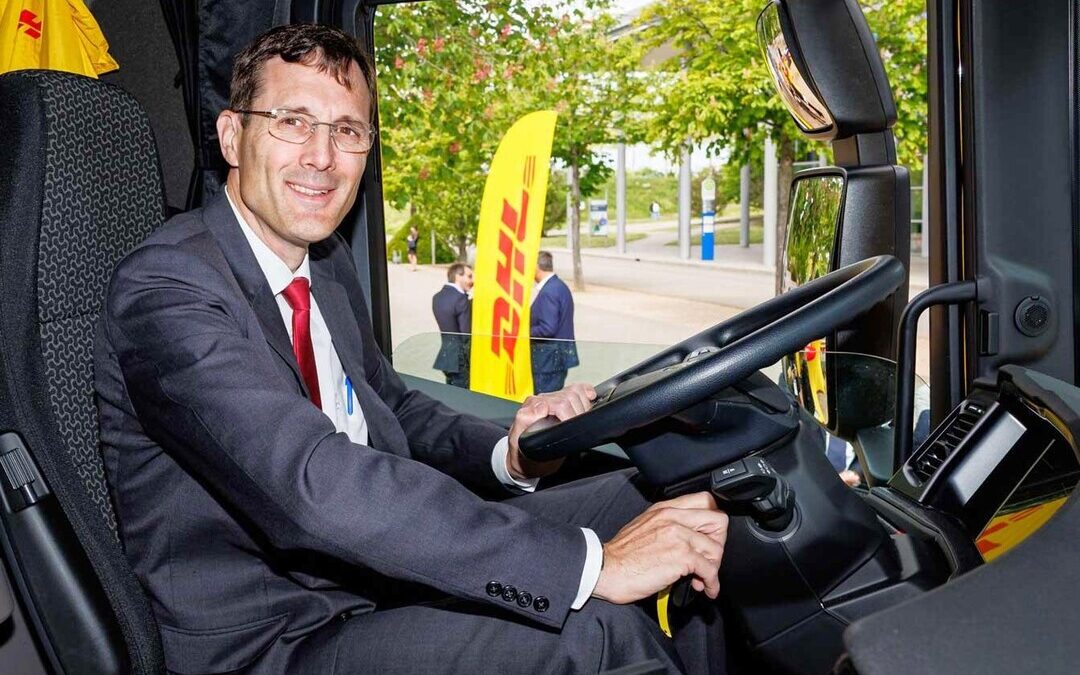DHL Unveils Electric Truck with Backup Generator that Cuts CO2 by 90%
Electric truck with backup generator proves 90% emissions cut in DHL’s 100-day Berlin–Hamburg logistics trial.
DHL Group has unveiled a new electric truck with a built-in fuel-powered generator that cuts carbon dioxide emissions by more than 90 percent during a 100-day trial run, the company said on Thursday, hailing it as a breakthrough for sustainable logistics.
The prototype, dubbed the Extended Range Electric Vehicle, was developed in collaboration with the Swedish truck manufacturer Scania. It ran parcel routes between Berlin and Hamburg for 100 days, covering nearly 22,000 km.
DHL reported the truck operated in fully electric mode over 91.9 percent of the time, with the onboard generator engaged for just 8.1 percent of the distance.
The result was a reduction of nearly 16 metric tons of CO2 equivalent compared to a conventional diesel-powered truck.
“This kind of pragmatic solution allows us to decarbonize the transport sector today — not in five or ten years,” said DHL CEO Tobias Meyer. “We need political frameworks that support such bridging technologies, not hinder them.”
Back-Up Generator Enhances Flexibility, Not Direct Drive
Unlike traditional hybrids, the EREV’s fuel generator does not directly power the drive axle. Instead, it charges the truck’s battery when needed, typically in colder weather or when charging stations are inaccessible. This setup provides the vehicle with added flexibility while ensuring that emissions remain low.
“This is a unique concept, not a hybrid in the usual sense,” DHL said. “It supports stable operations and route reliability — crucial in logistics.”
The truck draws its electric power from a 416 kilowatt-hour battery, while the generator adds 120 kW of recharging capacity. It can transport up to 1,000 parcels and tow an additional trailer, with a top speed limited to 89 km/h.
Call for Regulation to Match Emissions Performance
DHL called on EU and national policymakers to update road toll systems and fleet emissions frameworks to reflect vehicles’ real-world emissions — particularly for new concepts like the EREV.
“Vehicles like the EREV should be classified based on certified actual CO2 performance, not outdated categories,” said the company in a statement.
DHL welcomed the German government’s support for such intermediate technologies as laid out in its coalition agreement, but urged swift implementation.
Next Generation EREV to Feature Larger Battery
A next-generation version of the EREV is already in development, featuring a 520 kWh battery designed to reduce reliance on the generator further. DHL also noted that emissions from the fuel-powered generator could be reduced further by using renewable fuels, such as biodiesel.
The current prototype measures 10.5 meters in length and has a permissible gross weight of 40 tonnes, including the trailer. Its electric motor produces 230 kW (peak 295 kW).
DHL said the EREV’s success acknowledges the need for transitional solutions as Europe’s charging infrastructure for heavy-duty electric trucks remains underdeveloped.
“Full electrification will take years, especially with grid constraints,” Meyer said. “But we can’t afford to wait. The EREV shows we don’t have to.”


